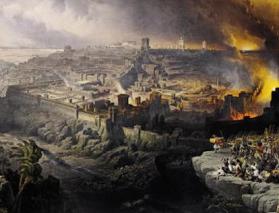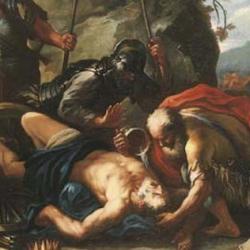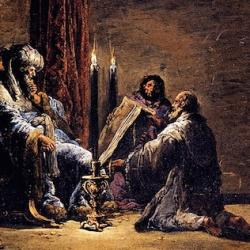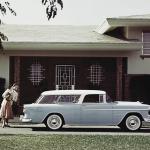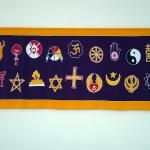After summarizing recent work on temple building in the Ancient Near East (1 & 2 Chronicles, 227–229), Mark Boda takes note of the differences between the accounts of Solomon’s temple building in Kings and Chronicles, with an eye to the question of whether or not the Chronicler is following ANE precedent. Scholars have suggested that “Chronicles appears to be more closely allied with the ancient ritual structure than its source in Kings” (230).
Among the features of the Chronicler’s account that suggest dependence on ANE precedent are these: First, drawing from Ray Dillard, Boda notes that “in Kings the hiring of a wise master builder occurs at the end of the account (1 Kgs 7), while in Chronicles this occurs at the outset (ch. 2).” That is closer to the ANE models. Second, “the Chronicler lays greater stress on the divine origin of the plans for the temple” by explicitly talking about a tabnit or pattern that David delivers to Solomon. Third, “in contrast to his source in Kings, which places a considerable literary interval between the theophany at Gibeon in 1 Kings 3 and the temple of the temple in 1 Kings 5, the Chronicler places the temple building directly after the visit to Gibeon. In this he echoes the broader ancient Near Eastern pattern of Temple building following a revelation to the royal figure” (230).
Boda, though, doesn’t think the case is decisive. The Chronicler may have had other reasons for shaping the story of Solomon’s building in the way he did.
The closing of the gap between Solomon’s dream and the temple is due to his “fixation on the Temple and its services.” In Kings, Solomon receives wisdom to rule justly, and demonstrates his wisdom in the judgment of the two prostitutes; “for the Chronicler Yahweh appeared to Solomon and endowed him with wisdom mainly for building the Temple.” Some of the divergences from Kings are “due to the Chronicler’s technique of linking his story to patterns established in the construction of the Tabernacle.” Thus, the fact that David has a tabnit is part of a Moses typology that runs through the Chronicler’s account (230).
Boda thinks it possible that the Chronicler is “drawing on the broader ancient Near Eastern patterns of Temple construction” but “it appears that this was mediated to him through the biblical accounts of the construction of the Tabernacle and second Temple. In this the Chronicler legitimized the Temple through links to the past but also made it relevant through links to the present of his audience” (231).






